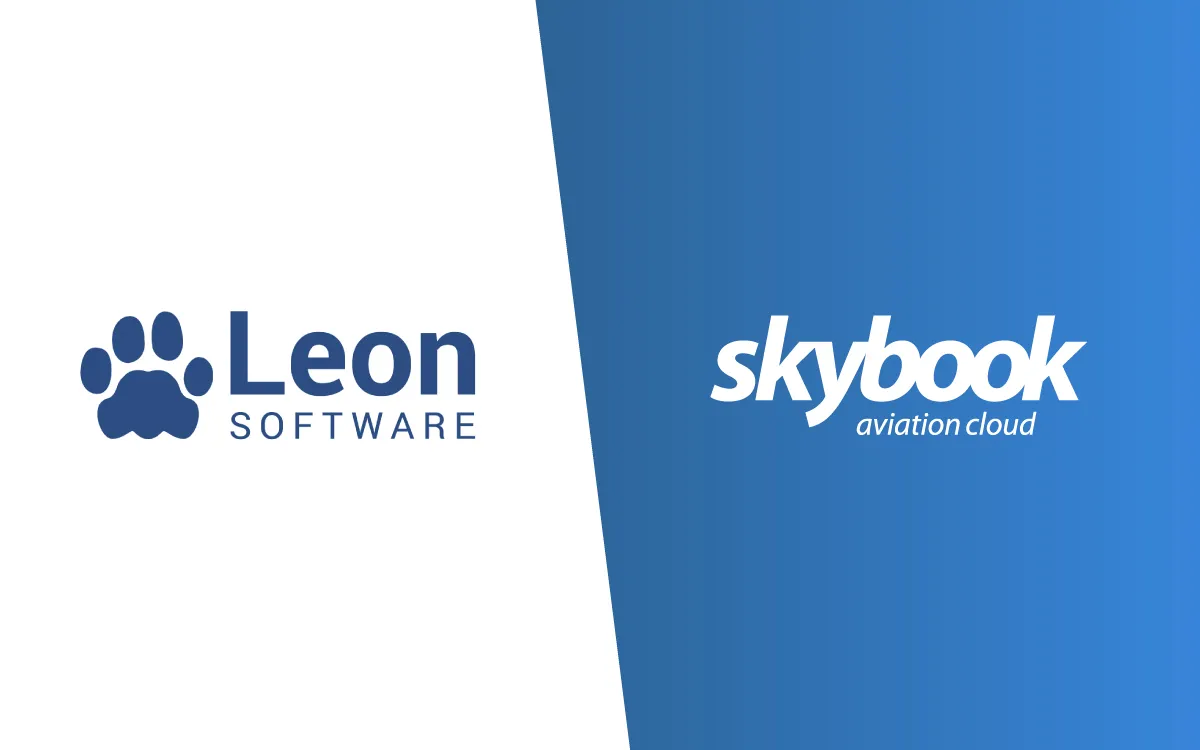
Leon Software Integration with skybook
Updated 16th July 2025
To understand what an Electronic Flight Bag is, let’s begin with a traditional pilots flight bag…
A briefcase that was used by the pilot to carry aircraft operational manuals, navigational charts, pilot logbooks, flight checklists, paper briefing packs and any other documentation relating to the pilot or the scheduled flight.
As you can imagine, carrying all those flight documents adds unnecessary weight within the cockpit and to the aircraft, this could easily be over 18kg! Compared to the weight of a small tablet device. 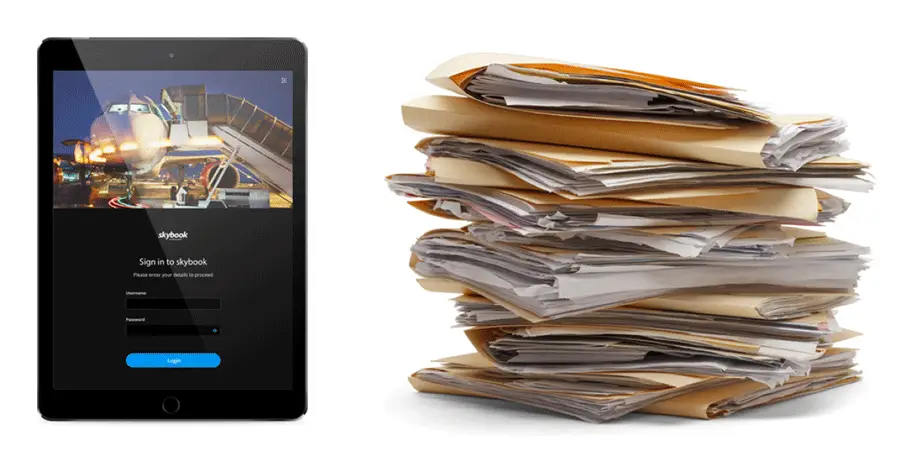
An electronic flight bag or EFB for short, is a digital device, most commonly an ipad or tablet used primarily on flight deck. It is usually the responsibility of an EFB manager to provide staff training on keeping the app up-to-date.
EFBs can contain multiple applications that manage flight briefing packages (OFP, weather & NOTAM etc), navigation & airport charts, documentation, performance calculations and more.
With the aim to streamline the flight crews workflow and enhance situational awareness, whilst reducing paper and weight, leading to significant cost savings in the process.
EFB solutions that contain electronic flight folder (EFF) briefings like skybook, also include a supporting Ground Portal. This improves coordination between flight crews and dispatch by enabling real-time status updates and creating a time-stamped audit trail for every action.
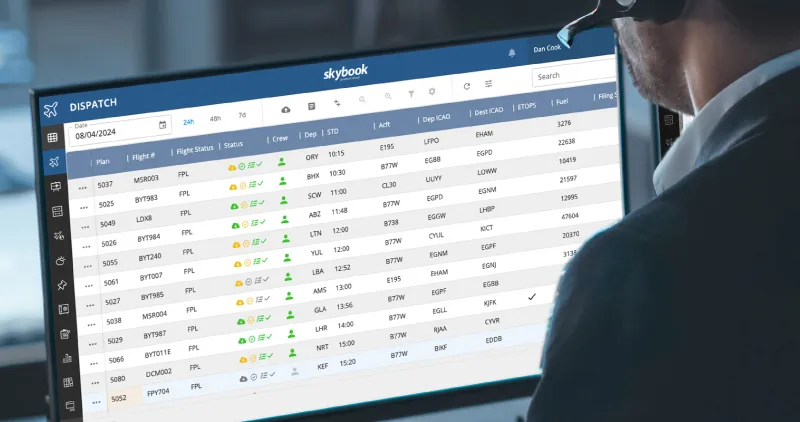
An EFB application can integrate with a huge array of flight data from other aviation software providers, such as the operational flight plan (OFP), crew rosters, flight scheduling, load sheets, charting apps, weather & NOTAM data, fuel orders and much more.
With the use of integration or APIs, EFB apps can easily calculate certain aviation data such as fuel usage, flight performance, and weight & balance. Traditionally this would be carried out using printed references or handed over to flight crew by the flight dispatchers.
Using an EFB for a pilot briefing and flight phase logging can save flight crew precious time. In turn helping to improve on time performance for the airline.
There are currently three software classifications for an EFB app. Type A and B are both considered portable electronic devices, whereas Type C is part of installed aircraft equipment. Here’s the types of EFB in more detail:
Type A
These are static digital applications that replace paper, such as document file viewers for PDFS, HTML, XML, etc. This could also include viewing digital aircraft operating manuals, and NOTAM information for airports and alternates. Intended for use during flight planning, pre flight and any flight phases that aren’t critical.
Type B
These tend to be more dynamic and interactive with panning, scrolling and zooming options. Often including the same information from Type A, but with extra features such as interactive weather map information, briefing charts, pilot briefing packs and inputting data for each flight phase into a journey log; such as the nav log.
Type C
Type C contains more critical flight phase information, that is used as a multi-function display, which allows pilots to see the navigation route, weather radar, traffic collision avoidance, etc.
Type C EFBs can only be used on installed equipment and need a supplemental type certificate approved by the FAA.
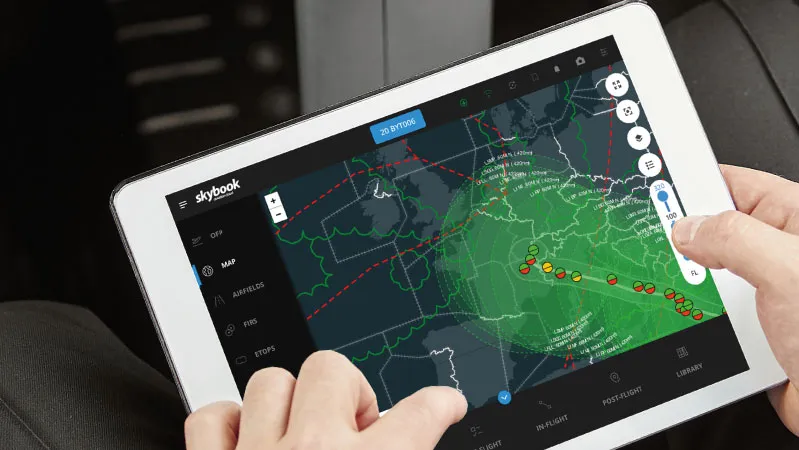
While the FAA's Advisory Circular (AC No. 120-76D) defines the Electronic Flight Bag (EFB) as primarily a flight deck tool, today’s EFB software is rapidly expanding its value across entire airline operations.
Enhancing pilot situational awareness and supporting broader operational tasks, modern EFB solutions are reshaping and expanding the traditional definition of what an Electronic Flight Bag is.
The evolution reflects a growing demand, with the global EFB market projected to double from $2.9 billion in 2021 to $5.8 billion by 2028 (source: fortune business insights).
Electronic Flight Bag (EFB) approval is well-established in Europe, North America, Middle East and Australia, while other regions are experiencing a growing demand for EFB approval, such as Africa, South America, South/Southeast Asia and Eastern Europe.
Airlines and EFB providers are increasingly looking to create fully integrated apps that bring everything pilots need into one place.
Minimising the need to switch between multiple applications and streamlining the entire workflow. Even making innovative summary pages that provide quick-links to send and retrieve data from other apps.
Some operators prefer to minimise the overall risk by maintaining and switching between number of separate EFB apps, with the aim to share certain data between them.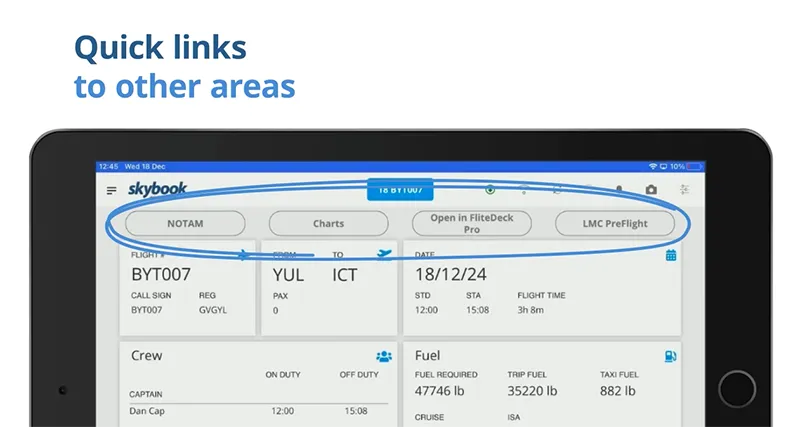
Here's some examples of ways an electronic flight bag can add value to operations:
Pilots value an EFB app that’s intuitive, requires minimal tapping, and streamlines data sharing.
That’s why solutions like skybook focus on simplifying the user experience and interface, while automating routine tasks to create a smarter, more efficient flight phase workflow.
Examples include:
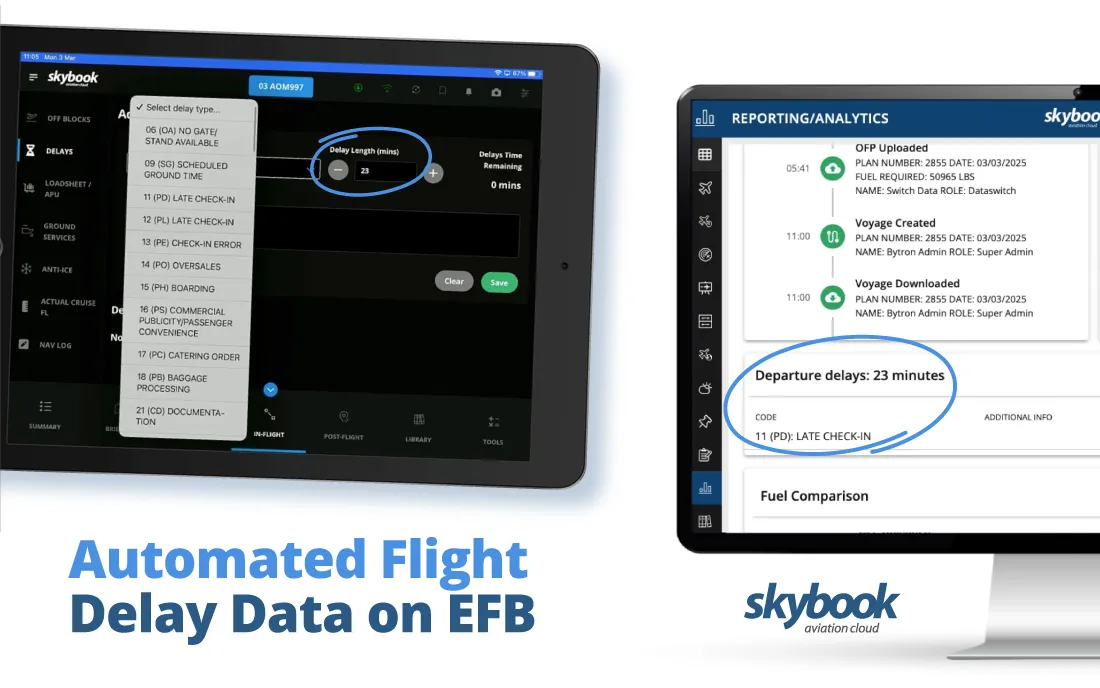
There are many benefits to flight crew and airlines using an electronic flight bag, such as:
The FAA is committed to developing policies for the ever evolving future EFB technology, to ensure that the demands of the aviation industry are met and EFB software can continue to provide efficient improvements for airlines and operators.
The skybook EFB is well established within the electronic flight bag industry since early 2000s and is making a difference to low-cost carrier airlines, private jets and regional airlines looking to streamline their flight operations and find cost-savings.
An electronic flight folder could be confused with an EFB, but it differs slightly...
The EFB is essentially the tablet application the pilots use; whereas the EFF is the briefing information that is collated and transferred onto the EFB app.
Hopefully you've learned more indepth information about what an electronic flight bag is.
You can learn more about the skybook aviation software, and why not read our top top EFB questions asked by airlines and aviation businesses.